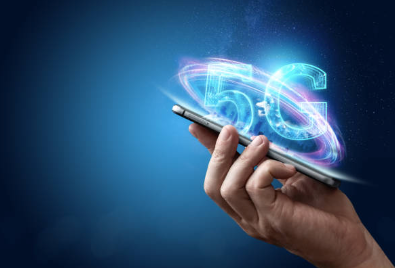The Need for 5G
In today’s hyper-connected world, where the demand for data-intensive applications such as high-definition video streaming, augmented reality, and Internet of Things (IoT) devices is skyrocketing, traditional networks are struggling to keep pace. Enter 5G – the fifth generation of cellular technology – designed to address these challenges and propel us into the era of the Internet of Everything (IoE). With its unparalleled speed and capacity, 5G promises to deliver a seamless and immersive digital experience like never before.
Lightning-Fast Speeds
One of the most touted features of 5G is its blazing-fast speeds, capable of reaching multi-gigabit-per-second rates. This means that downloading a high-definition movie could take mere seconds, while latency – the time it takes for data to travel from one point to another – is reduced to a fraction of what it was with previous generations. Such rapid speeds open up a world of possibilities, from real-time gaming and immersive virtual experiences to remote surgeries and autonomous driving.
Ultra-Low Latency
In addition to speed, 5G technology boasts ultra-low latency, a critical factor for applications that require instant responsiveness, such as remote surgery, industrial automation, and augmented reality. By minimizing delays in data transmission, 5G enables smoother and more reliable interactions between devices, paving the way for innovative solutions across industries.
Massive Connectivity
Another key aspect of 5G is its ability to support a massive number of connected devices simultaneously. With the projected proliferation of IoT devices – from smart appliances and wearable gadgets to industrial sensors and autonomous vehicles – traditional networks would soon become overwhelmed. 5G, however, can accommodate this surge in connected devices, laying the foundation for the interconnected world of tomorrow.
Transformative Impact
The impact of 5G technology extends far beyond faster download speeds and lower latency. Its transformative potential spans across industries, driving innovation, efficiency, and new business models. In healthcare, for instance, 5G-enabled remote monitoring and telemedicine services could revolutionize patient care, especially in rural or underserved areas. In manufacturing, the ultra-low latency of 5G networks facilitates real-time monitoring and control of industrial processes, leading to improved productivity and cost savings. And in transportation, 5G connectivity is instrumental in the development of autonomous vehicles, enabling seamless communication between vehicles and infrastructure for safer and more efficient transportation systems.
Challenges and Considerations
Despite its promises, the widespread adoption of 5G technology is not without challenges. Deployment costs, infrastructure requirements, and regulatory hurdles pose significant obstacles to its implementation. Moreover, concerns regarding privacy, security, and potential health risks associated with increased exposure to radiofrequency radiation have sparked debates and calls for further research.
The Future of Connectivity
As we stand on the cusp of the 5G revolution, one thing is clear – the future of connectivity is here, and it’s faster, more reliable, and more transformative than ever before. From powering smart cities and revolutionizing healthcare to enabling autonomous vehicles and redefining entertainment, 5G technology holds the promise of unlocking endless possibilities and reshaping the way we live, work, and connect with one another. As we embrace this next chapter in the evolution of communication, the journey towards a fully connected and digitally empowered society has only just begun.

